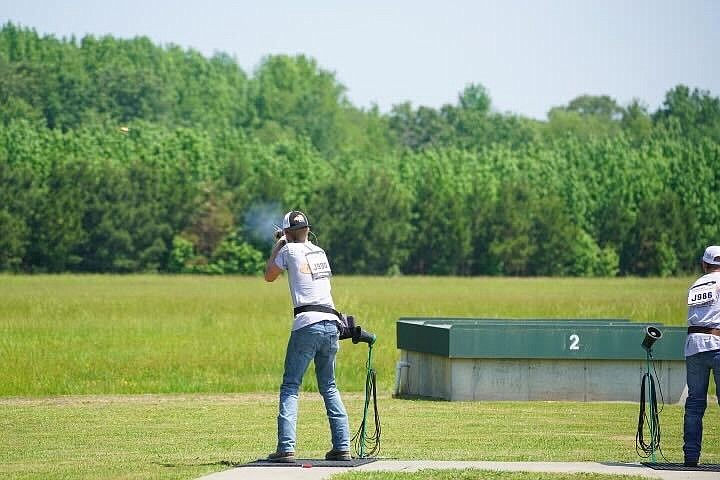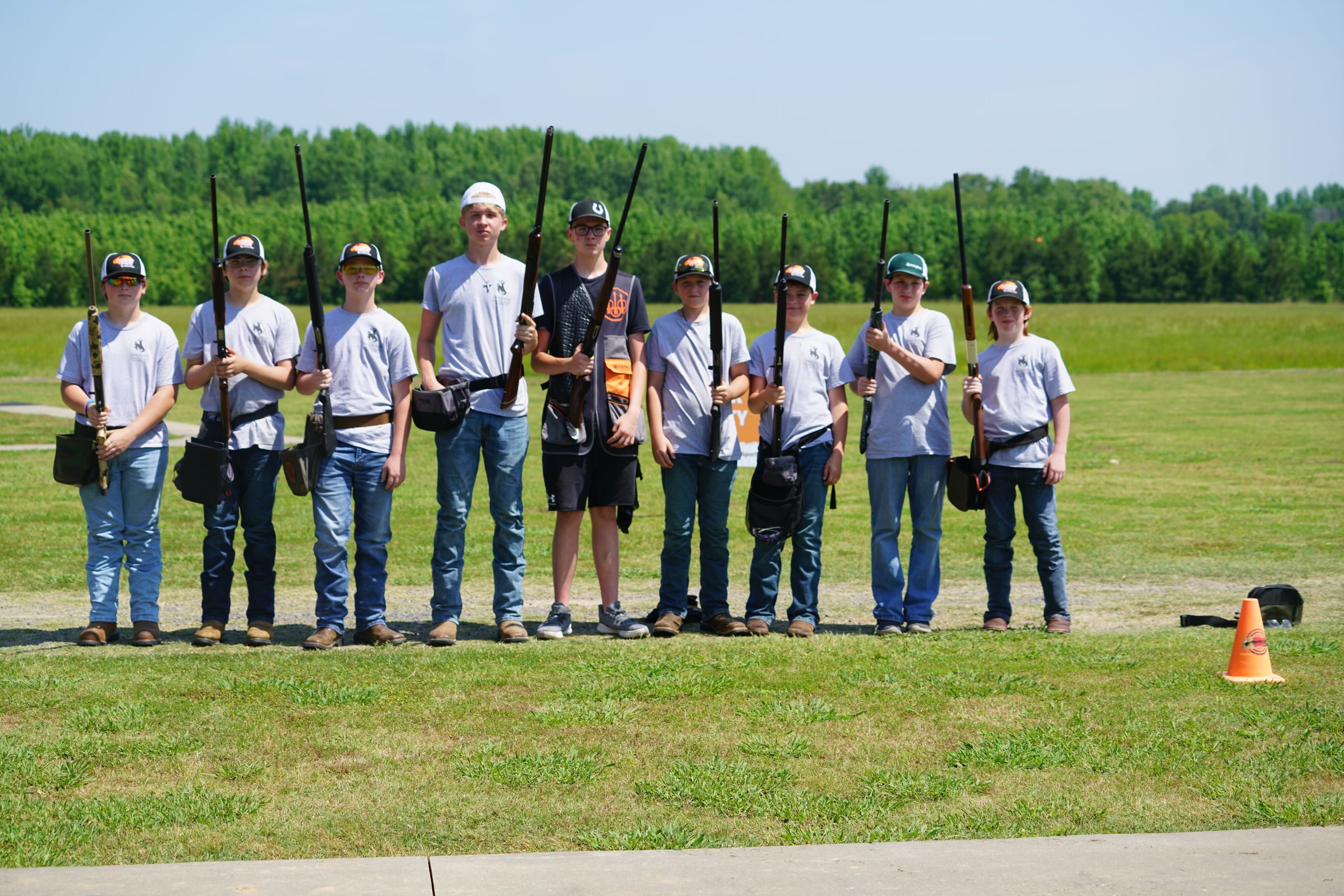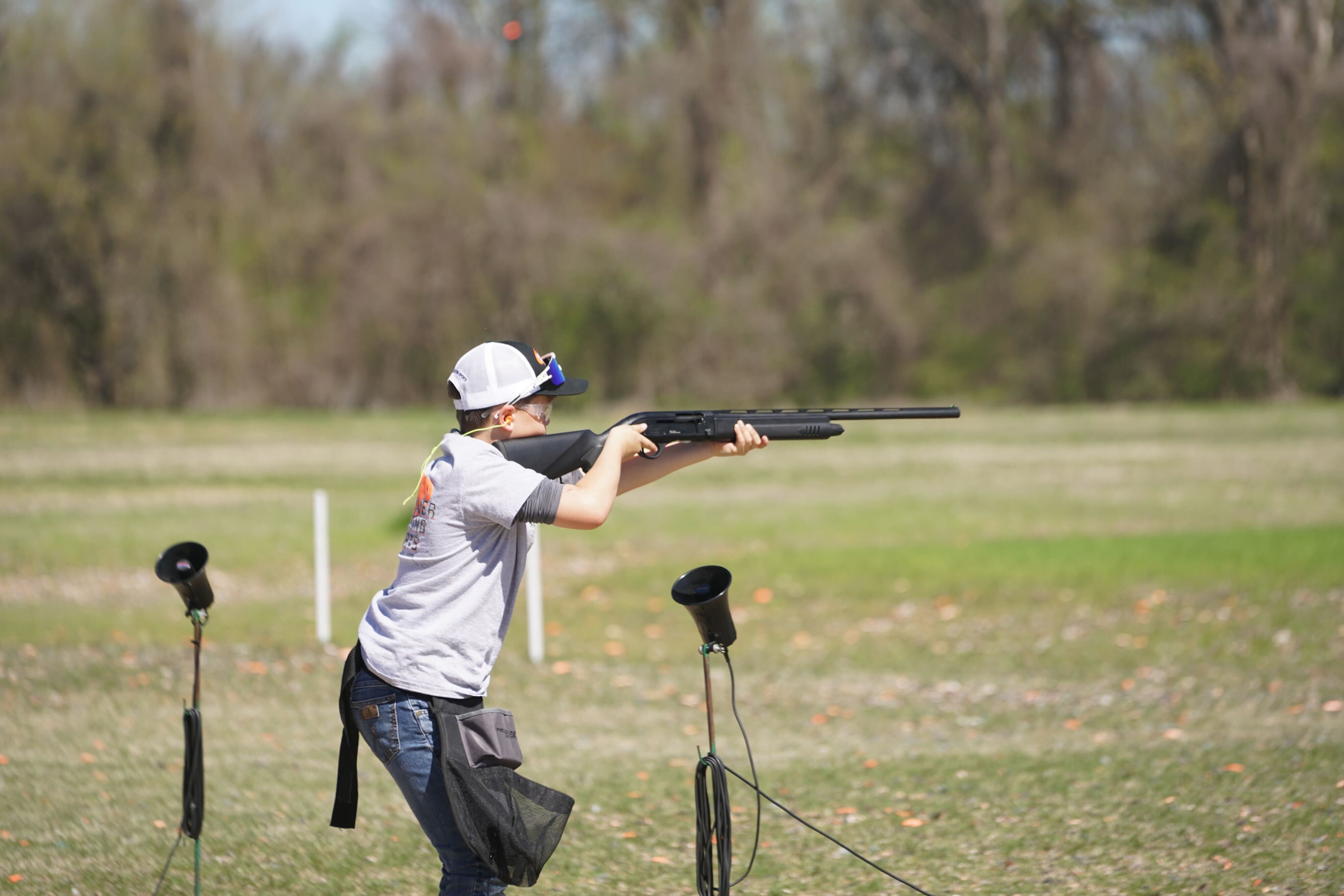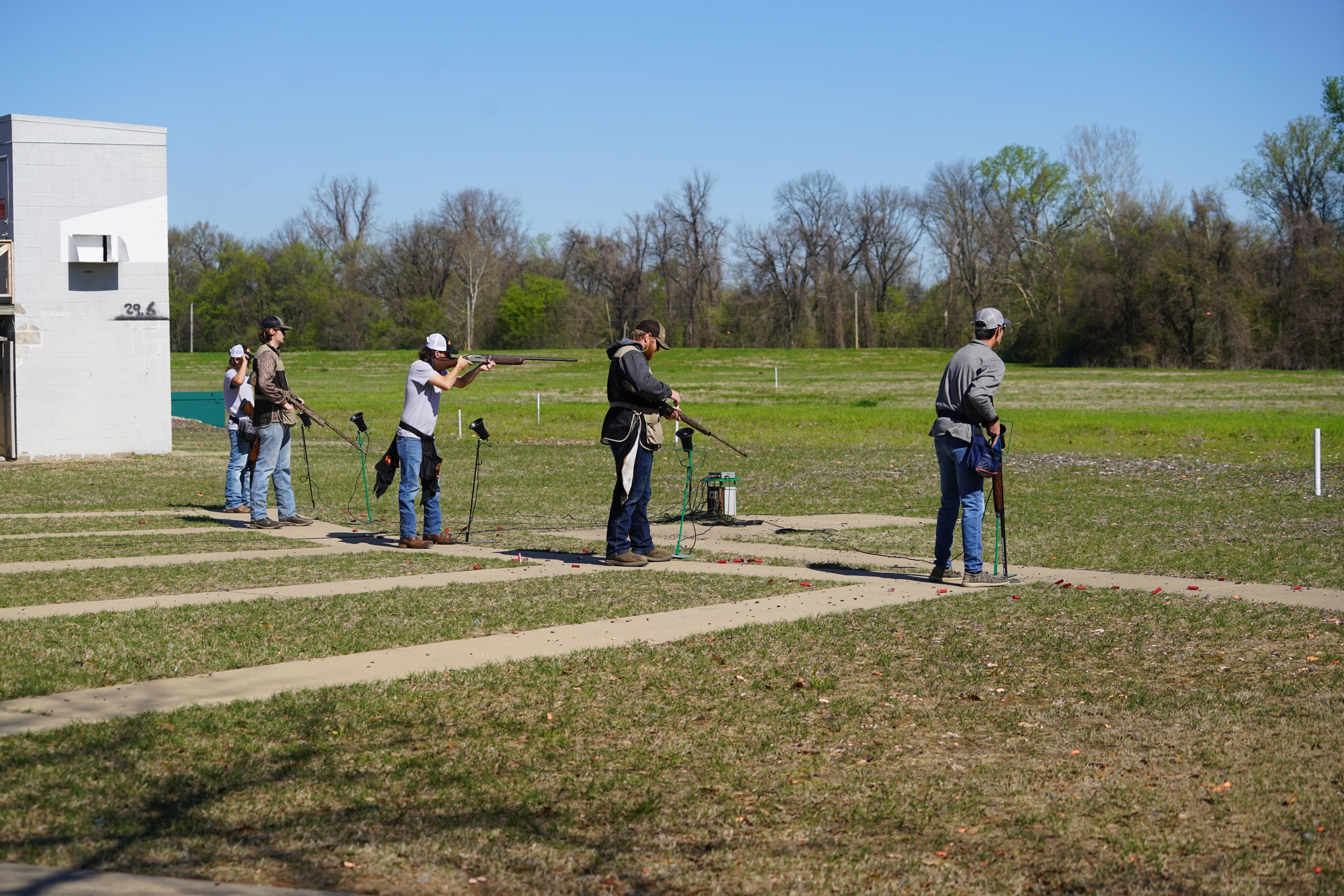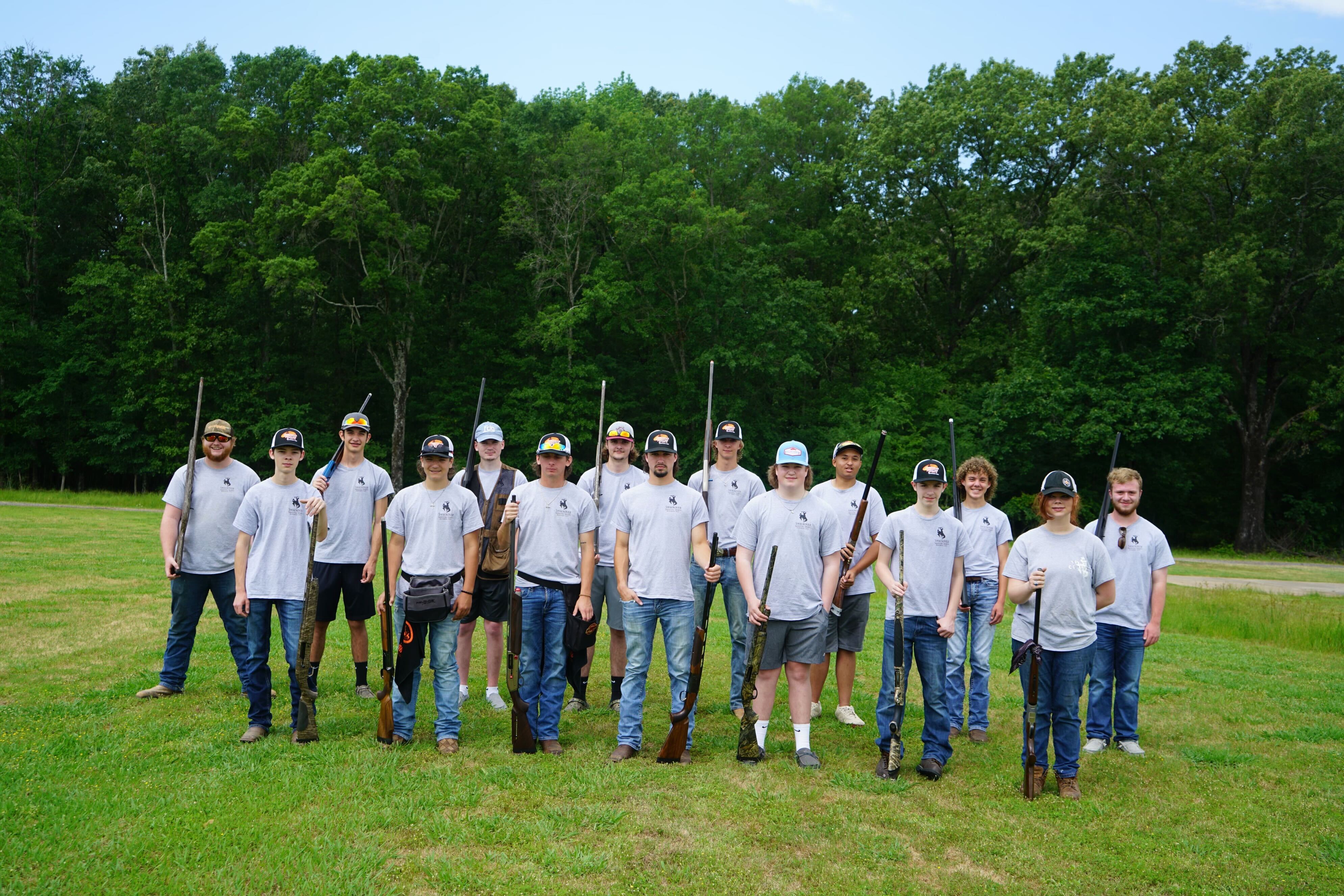Trap shooting is a sport that demands a lot from the individual.
Among traditional sports it is probably most comparable, says Smackover Shooting Sports head coach Allyn Ladd, to a free throw in basketball.
Shooters generally compete in five-person squads in the Arkansas Game and Fish Commission's Youth Shooting Sports competitions, but individual shooters must stand at the firing line alone.
In the moment, one's biggest opponent is oneself.
"I think it's probably one of the most mentally tough things. You're not only on a team, you're also trying to get your best individual score," Ladd said.
The AGFC competition is a five-stand American trap program, which requires shooters to fire at skeet from five different "stations."
There are two divisions: a junior division now open to 5th through 8th graders and a senior division open to 9th and above.
According to the AGFC, "any type of shotgun action is allowed, as long as the bore is 12 or 20 gauge" and competitions use trap throwers that fling targets at "unknown angles."
Smackover Shooting Sports is a long-standing program kept alive through a series of passionate coaches and parents. Ladd took over as head coach this year. Although in conversation, Ladd – an experienced hunter -- emphasizes that he is still learning the ins-and-outs of coaching competitive shooting, his passion for the project shines through in the sheer amount he has to say about the subject.
Smackover Shooting Sports is sponsored by the Smackover-Norphlet School District but exists as its own entity and does not receive direct funding from the district.
The team relies on fundraisers, donations and the dedication of team members and parents for supplies and transportation.
The team will need to finalize its roster for the year by March 1. Ladd said he expects the team to consist of "35 or 36" shooters this year, up from last year's 29.
The AGFC supplies amounts of shells and skeet based on the number of team members, and SSS holds fundraisers for supplies, such as extra shells and skeet, and for tournament fees. Shooters must have their own shotgun or rent a loaner, and parents are generally responsible for extras such as t-shirts.
The team typically practices two or three times per week in preparation for the regional tournament for the South region in May, from which the top 16 teams will emerge from over 100 teams to take part in the state tournament that brings all four regions together to compete.
The all-important tournament has its pressures, and last year Smackover Shooting Sports had junior- and senior-level squads qualify to compete in the state tournament.
Ladd hopes to build on this success.
Currently, the team is working with the city of Smackover to turn an empty location off Smackover Highway hat once served as the city dump into a practice shooting range for the team. In December, the city agreed to provide funding up to $75,000 to help make the project a reality. The grounds will also serve as a training range for the Smackover Police Department.
With funding assistance from the SNSD as well, along with fundraising that has garnered an estimated $20,000 in private donations, the team – which up to now mostly had to practice at a range in Camden – is hoping to have a field of its own ready to use "sometime this year."
"We're trying to make the money stretch, trying to do stuff efficiently with as many donations and as much volunteer work as possible," Ladd said.
"Ground prep is about 80% done, and I've been able to get private donations that allowed me to purchase two [trap throwing] machines that are on the way and we have two houses ordered that should be done within the next few weeks," he continued.
A practice range substantially closer to home will cut down on transportation needs and, overall, help the program continue growing.
Scholarships are available, Ladd said, for standout high school competitors who wish to continue to collegiate-level trap shooting programs. Trap shooters can also take the skills learned on teams like Smackover Shooting Sports and branch out to third-party competitions, such as those held by the Amateur Trapshooting Association's AIM youth league.
"[AGFC Youth Shooting Sports] is a stepping stone to this. The kids can get involved and take it to the next level," Ladd said.
Ladd is emphatic about the skills imparted by competitive trap shooting.
"Gun safety is the main thing and it introduces them to that. It is also heavily [focused on] hand-eye coordination. It's about concentration and discipline and staying in form," Ladd said.
The team has some members who are multi-sport athletes and some who fully concentrate on trap shooting.
Ladd relies on help from assistant coaches Shannon Huitt and Chris Walker, along with help from parents and other assistants, including two local competitive shooters who are assisting with technique and form.
"Seeing the kids advance, that's probably the most gratifying thing out of it. A kid might come in and shoot 8 out of 25 [skeet] and may be shooting 23 out of 25 by the end," Ladd said.
Rather than simply allowing team members to come and fire off boxes of 25 shells, coaching is focused on looking at the minutiae of the shooters' form and instilling discipline and focus.
"We want to work on mechanics and certain things rather than just going through the motions. We're trying to make the kids better shooters. Some want to just come have fun, but others take a liking and want to advance, so we want to cater to them too and give them what we can give them," Ladd said.
When the moment comes and a shooter is at their station, waiting for the trap to fly, they have to rely on their focus and technique to carry them through. Perhaps because of the repetitive, concentration-heavy nature of the sport, shooters can get in slumps or, alternatively, catch fire and nail every shot they take.
Shooters, Ladd said, have to consider what is going on in their mind when the trap is thrown and learn to refine that process. Coaches, on the same token, have to consider how to make that clear to their team.
"You can see techniques but you can't crawl into someone's brain and see what they're processing. That to me is the hardest thing to do... is getting them to communicate, what they are seeing, what their reactions are... and see what's going on," Ladd said.
Smackover Shooting Sports is constantly looking for fundraising opportunities and donations and, as Ladd emphasizes, is a 501(c)(3) nonprofit organization.
Those looking to help out or find out more info about the team can reach out at [email protected] or find the team's Facebook page under Smackover Shooting Sports.
"It's a good program, a good, positive thing," Ladd concluded.
